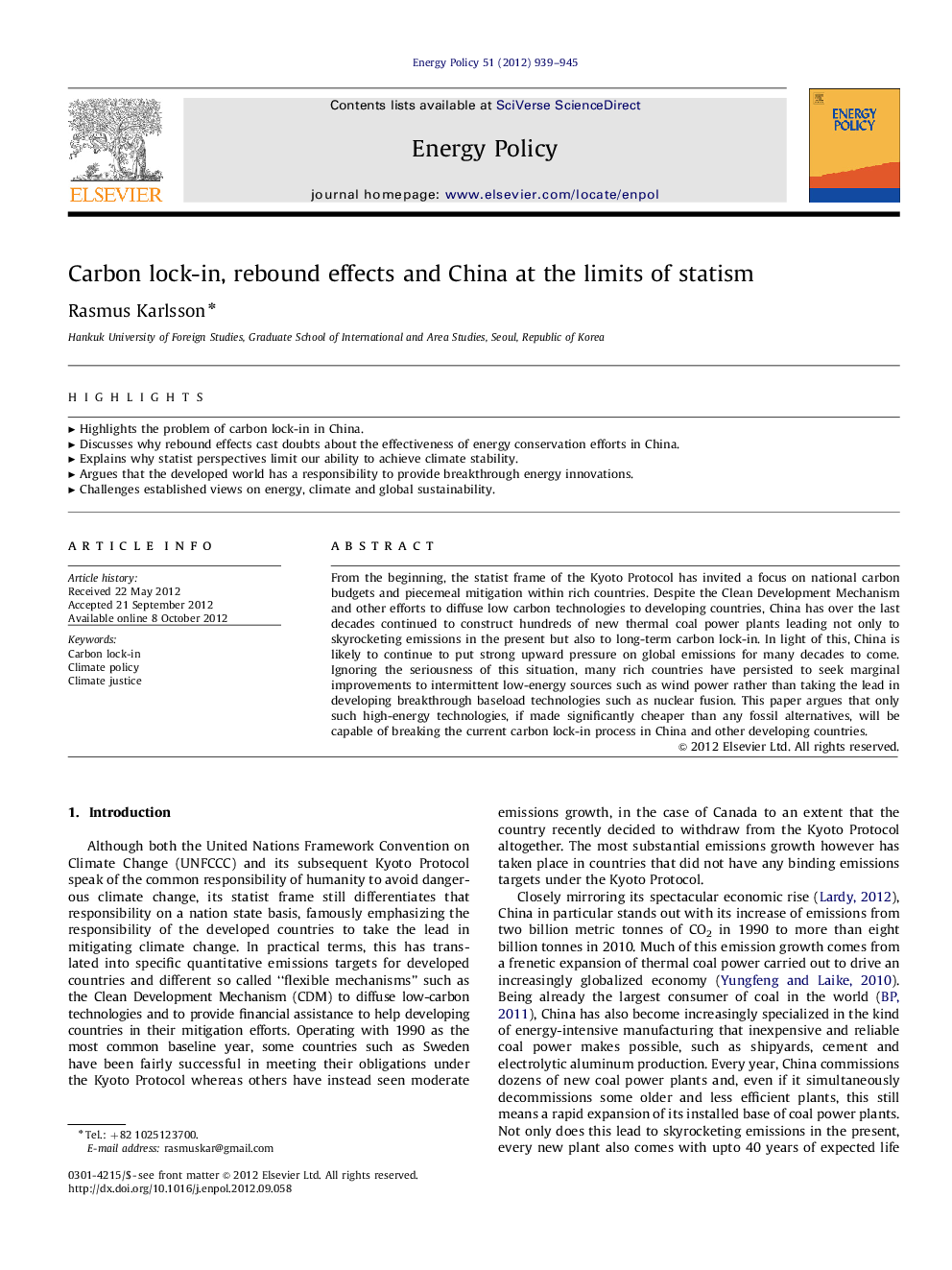| Article ID | Journal | Published Year | Pages | File Type |
|---|---|---|---|---|
| 995665 | Energy Policy | 2012 | 7 Pages |
From the beginning, the statist frame of the Kyoto Protocol has invited a focus on national carbon budgets and piecemeal mitigation within rich countries. Despite the Clean Development Mechanism and other efforts to diffuse low carbon technologies to developing countries, China has over the last decades continued to construct hundreds of new thermal coal power plants leading not only to skyrocketing emissions in the present but also to long-term carbon lock-in. In light of this, China is likely to continue to put strong upward pressure on global emissions for many decades to come. Ignoring the seriousness of this situation, many rich countries have persisted to seek marginal improvements to intermittent low-energy sources such as wind power rather than taking the lead in developing breakthrough baseload technologies such as nuclear fusion. This paper argues that only such high-energy technologies, if made significantly cheaper than any fossil alternatives, will be capable of breaking the current carbon lock-in process in China and other developing countries.
► Highlights the problem of carbon lock-in in China. ► Discusses why rebound effects cast doubts about the effectiveness of energy conservation efforts in China. ► Explains why statist perspectives limit our ability to achieve climate stability. ► Argues that the developed world has a responsibility to provide breakthrough energy innovations. ► Challenges established views on energy, climate and global sustainability.
